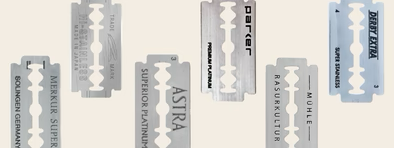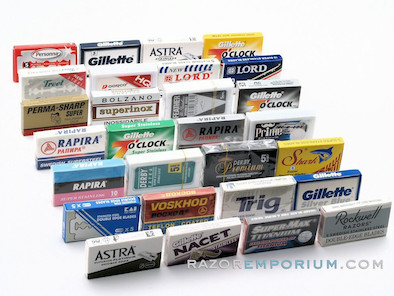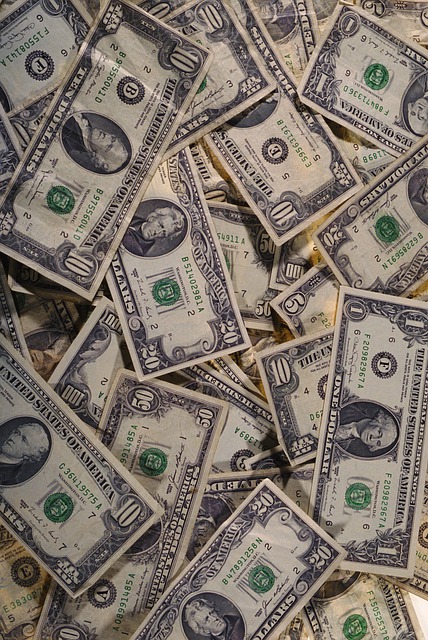By Lambert Strether of Corrente.
Let’s get the engineering stuff out of the way first, because masking is too important to be left to the medical community. Covid is airborne (a.k.a. aerosol transmission); people infect each other with Covid via “shared air”, which floats like cigarette smoke. Masks work to prevent airborne transmission of viriuses, and other particles of appropriate size, e.g. PM2.5[1]. this is settled engineering; no RCTs needed[2].
The way we live now, in a world where the danger of airborne diseases is known to be real, “personal risk assessment” is the norm, and yet the data to make such assessments is missing or polluted, the realist will conclude that breathing has, in itself, become dangerous, and apply the precautionary principle in daily life. I personally advocate a strategy of layered protection, in which masks — filtering shared air as they do — play an important part. Not all people, of course, are realists, but there are many who take share my views. Enough, in fact, to form a large market. In this post, I will argue that the way to reach that market is to transform masking into a social norm, as it is in Asia (which, in general, did far better saving lives during the Covid pandemic than did the West). Masking can become a social norm if masks become fashion items, but that can only happen if the mask industry adopts some standards.
A Mass Market for Masks Exists, Yet Without Demand Pull
Masks are highly functional. Besides protecting against Covid, they are likely to protect against unhealthy or lethal particles as follows:
PM2.5. PM2.5 pollution (think wildfires and dust from construction sites, among other sources) is increasing, driven by climate change, and is linked to mutations that cause lung cancer. Masks (even surgical masks) protect against PM2.5 particles.
Colds and Flu. “Mask use is well-documented for reducing respiratory viral spread…. The CDC estimates that so far this season, there have been at least 15 million illnesses, 150,000 hospitalizations, and 9,300 deaths from flu. Children are being hospitalized with RSV at higher rates than in previous years.”
Mold. Cordyceps as in The Last of Us aside, “If there is mold in your home (or you suspect that mold growth has occurred), protect your mouth and nose against breathing in mold by wearing at least a disposable, NIOSH-approved N-95 filtering facepiece respirator.”
The Next Respiratory Virus-driven Pandemic. “Together with recent estimates of increasing rates of disease emergence from animal reservoirs associated with environmental change, this finding suggests a high probability of observing pandemics similar to COVID-19 (probability of experiencing it in one’s lifetime currently about 38%), which may double in coming decades.” “‘Take [Covid] as an alert, a time to start being prepared for the next pandemic,’ [Margareth Dalcolmo, a member of Brazil’s National Academy of Medicine] said, ‘because we know respiratory viruses are going to increase.’”
As a sidebar, we might note that in addition that the anti-mask brigade, besides wanting to infect you with Covid, also wants to give you cancer, give your children RSV, have you breathe in black mold, and leave you unprepared for the next pandemic, which is most definitely coming[3]. These consequences are what anti-maskers call “Freedom.” End sidebar.
Given the functionality of masking, it’s unsurprising that a large market for them exists. From a 2023 survey by Monmouth:
I view these results optimistically. First, in spite of an enormous propaganda campaign, involving a lot of bullying, online and off, 50% of the population at least uses masks sometimes. That’s opportunity! Second, the usage patterns would seem to indicate that people are deciding when to mask and when not to. So for many, we need to improve protocols, not overcome resistance. Third, a hard core of 10% of the population — the 10% who are dedicated maskers — can have a big impact if organized. Finally, even 50% of the population is a big market. Market analysts agree:
“The disposable masks market is likely to record a [Compound Annual Growth Rate (CAGR)] of 7.4% during the forecast period. The market is expected to hold a market share of US$ 5.3 billion in 2023 while it is anticipated to cross a value of US$ 10.8 billion by 2033…. Rising awareness regarding airborne infections among consumers is spurring demand for disposable masks for personal use. The increasing incidence of viral outbreaks such as COVID-19 will propel the usage of disposable masks in the coming years…. Growing emphasis on personal safety and protection from airborne diseases and air pollution in the United States [listed above] is anticipated to create opportunities for growth in the coming years.”
And yet, despite masking’s functionality, and despite the market for masks, demand pull for masks — especially better masks — does not exist. Demand-pull “describes a supply chain where the trigger for supply is customer demand.” Operationally, venture capitalists recognize demand pull when a company puts a product on the market and consumers just can’t get enough of it; as I understand it, demand pull for a VC is a litmus test for another round of funding.
Clearly, demand pull (“can’t get enough”) is not happening for masks. (We can blame decades of neoliberal ideology and a well-funded campaign against masks by capital for this situation, but analyzing anti-mask propaganda is not the purpose of this post.) Stockpiling is proposed as a substitute for demand, but that didn’t work well in California, and in any case is no substitute for a functioning manufacturing base, because with the best will in the world, we can only guesstimate the size of the stockpile. Some demand might also be created by the desperate rearguard action — fought primarily, and entirely justifiably, by the disabled community — to re-institute universal masking in medical settings, but that is at best a partial solution.
In my view, the fundamental question is this: How do we create a world where masking is a social norm?
Masking Must Become a Social Norm
For whatever reasons — cultural differences, experience with SARS — masking is a social norm in (most of) Asia. I don’t know why those reasons aren’t at play in the United States — does half the population really want elders to die? — but clearly they are not. (I will note in passing that in the United States here is an enormous ferment at the DIY level for learning everything there is to know about how to protect one’s self with a mask, and also how to make them more, well, fun, but for whatever reason this ferment has not translated into demand pull, although perhaps it presages it. Many of exampes of mask DIY are documented in Water Cooler.)
My central proposition is this: Masks need to be reframed away from medical devices as fashion items. Kanye may be a head case, but he was onto something here (and let us remember he was at one point quite successful with his fashion lines):
(I don’t think I’d wear any of those particular masks, but I’d prefer something along those lines to a P100 (“Darth Vader”) masks. I’m not that committed to the bit, and my 3M Auras do the job. But it would be lovely to have mask that was actually pleasurable to wear.
Much as I disdain influencers, they’ve got the right idea here:
And:
I will happily do a photoshoot with anyone wanting a theme like this. I’m in Cologne, Germany. Smush my name into one word for Insta or add a dot com for my website. I’ve got portable lights for outdoor shooting. https://t.co/a9J50bL4lu
— Kira Hagen @kirahagen@masthead.social (@kirahagen) May 21, 2023
So how does any of this scale up? I think masks fall into two buckets: Disposable and elastomeric. (I’d like the elastomeric variety to win out, because I think the fit is intrinsically better.) Here are some elevator pitches for both:
Disposable. Work out how to produce N95 fabric in colors. I don’t know how many times I’ve seen wannabe fashionistas and Goths ask for masks in black — black goes with everything, after all[4]. But why stop there? Why aren’t there colorways for masks, so you can match your mask to your outfit? Why can’t N95 masks be screenprinted with something fun, instead of [checks mask] text like “3M Aura™ 9320A+ EN149:2001 FFP2 NR D CE 2797”? (3M is shoving me right into the medical box, exactly where I don’t want to be, as ill, as aberrant, as to be mocked and shunned.) Why can’t masks be embroidered, like shirt cuffs, with initials? Why don’t children’s masks come with stickers? Or cartoon characters? This DIYer has the right attitude:
Not what I would wear personally, but… something like cufflinks? Or an old-school tie?
Elastomeric. Elastomeric masks, by definition, have a frame, so any decorative device (see above) can be applied to them. However, I think elastomeric masks would be a good deal more, well, sexy if they were more high-tech. I can think of two technologies. First, a CO2 meter built into the frame. Right now, they’re rather large:
inspired by @maskbloc614 i hope to start sharing CO₂ levels from a factory-calibrated aranet4 in common areas for the sake of your informed decision-making
(this one’s from Pandora Park today) pic.twitter.com/SgsiXgnrys— wander til tomorrow (@T1L_TW33TS) May 17, 2023
But given a level of effort, the meter could be miniaturized. The nice thing about that concept is that it self-documents the need for the mask (“Why are you wearing a mask?” “Just look. The CO2 level here is 3798, and only under 500 is safe”MR SUBLIMINAL And because you’re breathing on me. The mask would be Bluetooth enabled so you could get a readout from your phone; or you could hold the phone up to your face; or carry a small mirror.) Aranet’s idea of green, yellow, and red lights might also be used.
Second, a blood oxygen meter. For example:
Here, the watch would communicate, via Bluetooth, to the mask. What’s nice about this concept is that it enables others to help you if you are in trouble.
Properly designed, both these ideas would work as fashion. Both are technical in the way Nike “kicks” are technical, invite communication instead of — some say — repelling it, and frame the wearer as being hip and possessed of situational awareness (one definition of “hip,” after all).
(It just occurred to me that another readout could be “days to replace filter” (“No, I’m good, the filters at 29!”)
What Prevents Masking from Becoming a Social Norm?
We’ve already spoken of the enormous and partially succcessful propaganda campaign against masks, so I will skip that. I will also skip over the need to protect American manufacturers from Chinese competition, and how the Biden Administration — in combination with beancounters in the Infection Control Units of hospital monopolies, who experienced cheap Chinese masks as a form of jouissance — nearly destroyed the American masking industry, even though — perhaps because? — many had entered the field at least partly driven by altruism. Instead, I will focus on two technical barriers to scaling: Lack of standards for sizing and fitting, and lack of interchangeable filters for elastomerics.
Sizing and fitting. I couldn’t even begin to aggregate the tweets I’ve seen on how to get a mask that properly fits (and fit, of course, is crucial for protection). There are whole threads, many of them. The industry has attempted to solve the problem with “sample packs,” or by offering masks in two or three different shapes, but these are clearly kludges. Masks should, at least, be as easy to fit as shoes[5], for which there are standards:
In an effort to develop a shoe size guide, the ‘Ritz Stick’ was invented around 1913, and patented in 1916. Featuring a flat wooden scale with a fixed heel stop and sliding toe stop, it is said to have been the first nationally recognised device for foot measurement in the USA. Manufactured by American Automatic Devices Co, the Ritz stick proved very popular during the early 1920s. In 1988 this device, which is still being manufactured today, was modified to include women’s sizing.
Not many years after the introduction of the Ritz Stick, New York-based inventor Charles Brannock reportedly spent two years developing a simple means of measuring the length, width, and arch length of the human foot. His first prototype was patented in the 1920s and he later formed the Brannock Device Company to manufacture and sell the product.
Here is the Brannock device:

What we need is a Brannock app on our digital devices — phones or tablets. You point the camera at your face, and the app spits out the standardized sizing (when a standard is developed). Perhaps some laid-off Silicon Valley programmer can figure this out; it would seem to fall out of facial recognition algorithms.
Interchangeable filters. Replaceable filters for elastomeric masks should be standardized and work like razor blades do:
In the early 1900s, an innovation by King Camp Gillette really put the safety razor on the map. Building on the design of the Kampfe brothers, Gillette created a razor with two cutting edges (double-edge shaving!) and perhaps more importantly, he used growing technology to create extremely thin razor blades that could be disposed of and replaced inexpensively.
The blade design:

Which enables an entire industry:

I know the concept is to give away the razor and make your money on the blades, and, if possible, to lock your customer into a proprietary blade design, and I think that thought goes through every elastomeric manufacturer’s mind, or at least their marketing department’s. Business is business! However, as a potential customer, the sizing doubts and filter doubts reinforce each other; am I going to buy a mask that doesn’t fit and be stuck with the filters too? And even if the masks fit, will I be gouged on the filters later (the business model says I will), and will the manufacturer exist? The model is wrong. Make the filters interchangeable, and compete on the frame; the fit, the feel, the look, the embedded devices. Make the filters a commodity, and make the elastomeric mask a fashion item, and consumers will end up buying several masks for different occasions. The whole field will grow.
Conclusion
These are my thoughts on making masking universal by turning masks into a fashion item, enabling masks to become a social norm. That efforts depends on sizing and fit standards, and standards for interchangeable filters. There is a trade association, the American Mask Manufacturers Association. Trade associations write standards. AMMA, get to it. You’ve got ’til the next pandemic. If you do, I can go long masks!
NOTES
[1] There is rough hierarchy of masks according to the seal they create, starting with “Baggy Blues”, (surgical masks), through ear-loop respirators (KN95), headstrap respirators (N95, ideally fit-tested), and ending with full-on Darth Vader masks. (I’m eliding N95 and KN95 because the market has so confused them; there also many international standards). Protection should, of course, be layered, masks forming one layer.) Yes, Covid is the disease, SARS-CoV-2 is the virus. Then again, HCWs themselves say “COVID filled room” so there’s no point being tediously literal-minded.
[2] For a famous takedown of so-called Evidence-Based Medicine’s RCT (Randomized Controlled Trial) fetish, see “Parachute use to prevent death and major trauma when jumping from aircraft: randomized controlled trial.” Sadly, as yet no Hospital Infection Control goons have volunteered to be the controls in such a study. But I live in hope!
[3] Nothing wrong with a little shaming. None of the cool kids wear “Baggy Blues”:
[4] Why isn’t there a Chanel(-licensed) “little black mask?”
[5] The story of shoe size standards is a lot more complicated and interesting than this brief quote shows. Shoes were measured in “barleycorns,” there are different national standards, children’s sizes, manufacturers gaming the sizing for competitive advantage; the usual standards fare.


